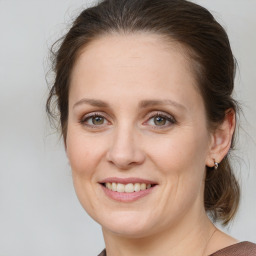This assessment will cover further questions:
- Discuss about the Analysis of Time of Assembly.
- Discuss about the CO2 Emission.
Introduction
Statistics analysis plays essential role in business decision making, planning and strategy formulation (Berman,and Wang, 2016). This report provides a brief introduction about the fundamental statistical approach and techniques used to sort out the business problems and improving the decision making process. This report covers the application of statistical techniques to solve the business problems. Three business problems are given as evaluation of climate change to unstable activities, second is analysing the basis statistical aspects based upon car assembly plant in Adelaide that contains the data of 40 workers and the third problem is related to analysis of purchasing power of the dollar in order to determine the investments to provide protection against inflation.
1. CO2 Emission
a) Graphical technique for comparing values
|
Country |
2009 (in millions of metric tons) |
2013 (in millions of metric tons) |
|
United States |
5957 |
5300 |
|
China |
5323 |
10330 |
|
Russia |
1696 |
1800 |
|
Japan |
1230 |
1360 |
|
India |
1166 |
2070 |
|
Germany |
844 |
840 |
|
Canada |
631 |
550 |
|
United Kingdom |
577 |
480 |
|
South Korea |
500 |
630 |
|
Italy |
467 |
390 |
|
Iran |
451 |
410 |
|
South Africa |
424 |
330 |
|
France |
415 |
370 |
|
Saudi Arabia |
412 |
490 |
|
Australia |
407 |
390 |
The above table states the position of CO2 emission in fifteen countries. The emission is measured in millions of metric tonnes for the year 2013 and 2009. China is recorded as highest CO2 emission country within the gap of four years. The United states controlled the emission of CO2 by implementing strong environment friendly rules and legislations (Hutton, Jiang and Kumar, 2014). Australia was the only country that maintained the same level of the emission.
b) Graphical technique for comparing the percentage value
|
Country |
% change |
|
South Africa |
-22.17% |
|
United Kingdom |
-16.81% |
|
Italy |
-16.49% |
|
Canada |
-12.84% |
|
United States |
-11.03% |
|
France |
-10.84% |
|
Iran |
-9.09% |
|
Australia |
-4.18% |
|
Germany |
-0.47% |
|
Russia |
6.13% |
|
Japan |
10.57% |
|
Saudi Arabia |
18.93% |
|
South Korea |
26.00% |
|
India |
77.53% |
|
China |
94.06% |
The above table states the % change in value of CO2 emission in 2009 and 2013. Astonishing results were recorded in terms of different countries. It is analysed that few countries controlled the level of CO2 emission by considering the emission law and regulations (Dittmar and Duchin, 2015). Fossil Fuels mainly used in producing cement and blocks. In the first quarter of 2013 information on energy usage on China also demonstrates a perpetuation of this ' stasis ' in growth rate. It is evaluated that small rise in 2012 was a first indication of a downturn in worldwide CO2 emission development, and a perpetuation of the development pace of 2.0 percent in 2013. Nine countries controlled the emission and South Africa recorded as high level controlling carbon emission country, UK reduced by 16.81%, Italy reduced by 16.49%, Canada reduced by 12.49%, United States was analysed as 11.03%, France reduced by 10.84% and Iran reduced by 9.09%. Emission in Chana get increased by 94.06% which was highest among all the selected countries.
c) Comparing a & b
After comparing the level of emission of CO2 in fifteen countries due to use of fossil fuel the results were counted effectively. It is observed that the level of emission of transportation by 28.9% of 2017 considered in various levels and high consumption level of petroleum resources is one of the reason of increasing emission level. Industries uses fossil fuel for producing energy and the level and this energy is used to generate other goods and convert the energy in other forms. In the year 2009 the use of fossil fuel. It is evaluated that effect of gas emission in US get increased in comparison to Fossil fuel.
2. Analysis Of Time Of Assembly
a) Adequate frequency distribution
Frequency distribution indicates towards the evaluation of repetitive data and numbers(Bickel and Lehmann, 2012). Categories mainly divided in defining values, average and the summarising them in a categorised manner.
|
Classes |
Frequency |
Relative frequency |
|
35 - 45 |
3 |
0.60 |
|
45 - 55 |
5 |
0.50 |
|
55 - 65 |
10 |
0.59 |
|
65 - 75 |
17 |
5.67 |
|
75 - 85 |
3 |
3.00 |
|
85 - 95 |
1 |
1.00 |
|
95 - 105 |
1 |
0.03 |
|
Total |
40 |
11.38 |
Its phrase relative frequency is used for the proportion of an overall result's measured intensity as well as the spontaneous study's complete intensity. Assume that a arbitrary test is refuted N years and how a result is witnessed f times. The above table determine the frequency and the relative frequency of assembly line worker to complete a weld at a car. The plant analysed the capacity of 40 workers in Adelaide and found that the frequency of 3 workers take 35-45 seconds, 5 workers take 45-55, 10 workers take 55-65, 17 workers consumed 65-75, 3 workers take 75-85 seconds, 1 worker take 85-95 and 1 take 95-105 seconds to weld a car in assembly line. The relative frequency is calculated by dividing the dividing of succeeding frequency in previous frequency. As relative frequency of 35-45 is calculating by dividing frequency of 45-55 in 35-45 as 3 / 5 = 0.60 and so on.
b) Proper Cumulative frequency distribution
|
Classes |
Frequency |
Relative frequency |
Cumulative frequency |
Cumulative relative frequency |
|
35 - 45 |
3 |
0.60 |
3 |
0.60 |
|
45 - 55 |
5 |
0.50 |
8 |
1.10 |
|
55 - 65 |
10 |
0.59 |
18 |
1.69 |
|
65 - 75 |
17 |
5.67 |
35 |
7.35 |
|
75 - 85 |
3 |
3.00 |
38 |
10.35 |
|
85 - 95 |
1 |
1.00 |
39 |
11.35 |
|
95 - 105 |
1 |
0.03 |
40 |
11.38 |
|
Total |
40 |
11.38 |
From the above evaluation the cumulative frequency is calculated the cumulative relative frequency by considering the same method of analysing the relative frequency.
c) Histogram
A histogram is a depiction of tallied frequency range, displayed as adjoining squares or triangles (in certain cases), excavated over linear increments (bins), with an region commensurate to a frequency of the sequence findings.
A relative frequency histogram utilizes a certain data as an intensity histogram, but relates the total number of elements for each grade period (Vogt and Barta, 2013). A hexagonal pattern's altitude is also equivalent to both the unit frequency thickness, i.e. the volume separated by the frame length. The above histogram defines the class of different groups and categorise the sections of samples in their received outcomes. The bars in chards define the group in selected group of classes subject to assembly line workers. Histogram easily defines the groups by their size and present a valid information to record them in effective manner. The histogram states that the class group of 65-75 seconds retain high number of workers to weld a car.
d) Ogive
It is recognised as a graphical representation of statistical data that shows the cumulative distribution function. It is prepared in symbolic design to frame it in a systematic manner so that it would become understandable to communicate the results in more effective and synchronised way. Number of observations used in order to determine the statistical measures with differences.
Ogive of cumulative frequency
|
Classes |
Cumulative frequency |
|
35 - 45 |
3 |
|
45 - 55 |
8 |
|
55 - 65 |
18 |
|
65 - 75 |
35 |
|
75 - 85 |
38 |
|
85 - 95 |
39 |
|
95 - 105 |
40 |
The curve defines the increasing point of class groups in order to increasing trends (Thiem, 2014). The results also helsp to determine the group capacity to scale them in different categories. It works as a compass that helps in considering the different categories in various terms.
Ogive curve of cumulative relative frequency
|
Classes |
Cumulative relative frequency |
|
35 - 45 |
0.6 |
|
45 - 55 |
1.1 |
|
55 - 65 |
1.69 |
|
65 - 75 |
7.35 |
|
75 - 85 |
10.35 |
|
85 - 95 |
11.35 |
|
95 - 105 |
11.38 |
The above graph indicates towards the increasing trends of cumulative frequency for the purpose of assembly line workers. The points indicates different cumulative factors points towards the required areas of improvements. This presents more strategic and aligned descriptive approach in terms of calculating the results with more strategic manner.
e) When data is less than 65
The data was framed in order to determine the strength of workers take time less than 65 seconds. The results were calculated by complying the statistical formula as =countif(range,â€<65â€). The results states that 16 workers takes less than 65 seconds to complete e a weld at assembly plant.
f) When data is more than 75
The results showed significant difference when data was more than 75 seconds and it is calculated by the formula =countif(range,â€>75â€). The results states that total 5 workers take times more than 75 seconds to complete weld at car assemble plant.
3. Estimation And Testing Significance Level
a) Graphical Descriptive Measure of two variables
As the inflation get down the strength of purchasing power in Australia. The analysis states the situation of reducing the purchasing power of dollar (Priebe and Spink, 2012). The expectations of investors got higher in order to determine the investment values so that they would become able to get adequate returns on their investments. Regular changes in the price of shares affected the customer price. The index of customer price and the all the ordinary index are given from 1995-2015. the evaluation is done below;
the above chart defines the descriptive measures for the relevant data and series information.
b) Scatter plot
c) Numerical brief report of data
|
Year |
Rate of inflation (%) |
All-Ordinaries index |
|
|
Mean |
2005 |
2.69047619 |
3982.733333 |
|
Standard Error |
1.354006401 |
0.260393911 |
269.9897018 |
|
Median |
2005 |
2.5 |
4127.6 |
|
Mode |
#N/A |
2.4 |
#N/A |
|
Standard Deviation |
6.204836823 |
1.193274806 |
1237.248245 |
|
Sample Variance |
38.5 |
1.423904762 |
1530783.22 |
|
Kurtosis |
-1.2 |
2.038281598 |
-1.010009362 |
|
Skewness |
-4.90835E-17 |
0.798407674 |
0.182747008 |
|
Range |
20 |
5.6 |
4336.8 |
|
Minimum |
1995 |
0.3 |
2000.8 |
|
Maximum |
2015 |
5.9 |
6337.6 |
|
Sum |
42105 |
56.5 |
83637.4 |
|
Count |
21 |
21 |
21 |
d) Coefficient of correlation between the rate of inflation and all ordinaries index
|
Rate of inflation (%) |
All-Ordinaries index |
|
|
Rate of inflation (%) |
1 |
|
|
All-Ordinaries index |
0.038875116 |
1 |
|
Correlations |
Rate of inflation (%) |
All-Ordinaries index |
||
|
Rate of inflation (%) |
Pearson Correlation |
1 |
-.011 |
|
|
Sig. (2-tailed) |
.963 |
|||
|
Sum of Squares and Cross-products |
32.952 |
-342.143 |
||
|
Covariance |
1.648 |
-17.107 |
||
|
N |
21 |
21 |
||
|
All-Ordinaries index |
Pearson Correlation |
-.011 |
1 |
|
|
Sig. (2-tailed) |
.963 |
|||
|
Sum of Squares and Cross-products |
-342.143 |
30615662.571 |
||
|
Covariance |
-17.107 |
1530783.129 |
||
|
N |
21 |
21 |
||
e) Simple loner regression model and the linear equation model
f) Coefficient of Determination R2
The coefficient of determination is calculated as R2 = 0.9892. this states that there is a significant difference exist between the inflation level and the purchase price of dollar.
g) Evaluation of significant relationship at 5% significance level
At 5% significant level the coefficient correlation is calculated as 0.038875116 which is less than 0.05. it states that there is no any difference exists in all ordinary index and rate of




















